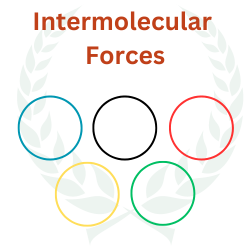The bonding interactions between atoms form various ionic, polar, and nonpolar covalent molecules.
The polar and nonpolar covalent molecules can electrostatically interact with each other without forming any new bonds. These non-bonding interactions are called Vander Waals that control many physical, chemical, and biological properties of shape, nature, reactivity, etc.

In 1912, scientists found another new non-bonding molecular interaction potent than the Vander Waals interaction in polar covalent molecules. The interaction was specifically active when the polarity in a molecule is due to electronegative atoms (N, O, or F) to which Hydrogen is covalently bonded. This interaction is called Hydrogen bonding and affects various other properties of nature, shape, solubility, density, melting point, and boiling point of a compound.
For example, water is liquid in nature at room temperature due to the hydrogen bonds of the water molecules (H2O). The close association is hard to break; therefore, water boils at a high temperature of 100oC to free the linked H2O into individual molecules.
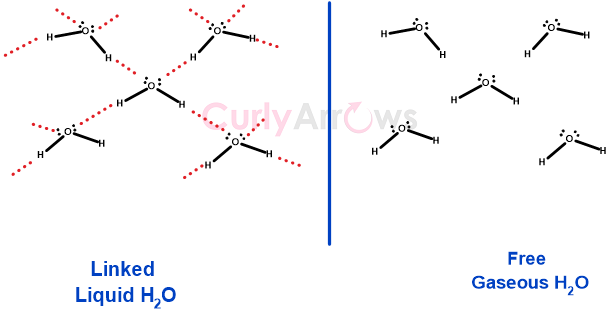
DNA has two shapes - helical and pleated due to the Hydrogen bonds holding nucleic acid strands, thereby influencing their forms.
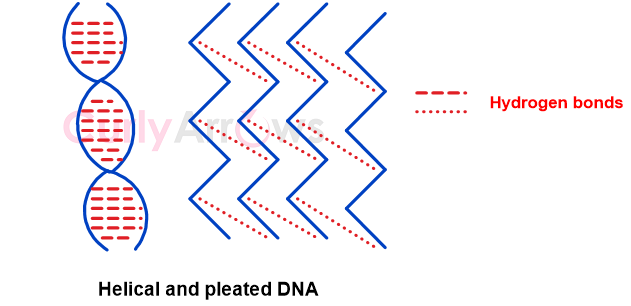
Organic and few inorganic acids and alcohols show high solubility in water due to their ability to form Hydrogen bonds.
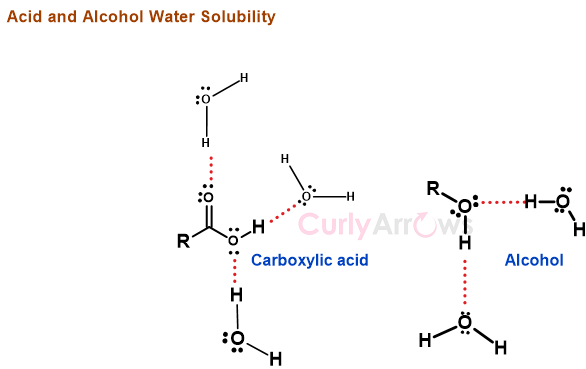
HF - an inorganic compound exists in a liquid state due to Hydrogen bonding, whereas its counterparts HCl, HBr, HI are gaseous.
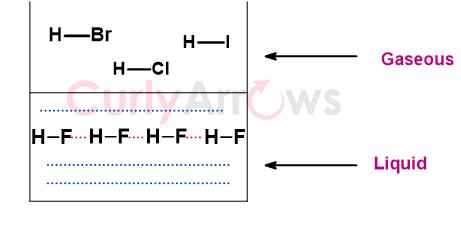
The crystalline ice has water molecules held in a hexagonal shape due to the Hydrogen bonds that create spaces affecting the density, and that floats ice on the water.
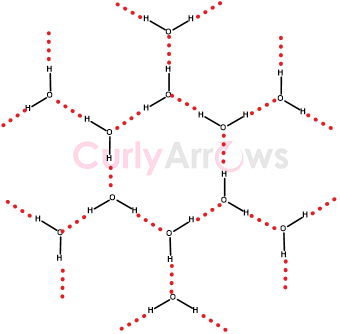
What is Hydrogen Bonding ?
Hydrogen bonding is a type of intermolecular interaction that specifically occurs when the Hydrogen is between highly electronegative atoms N, O or F. The Hydrogen is covalently bonded to one electronegative atom, and it tries to pull by attraction the other neighbouring electronegative atom without forming any formal bond. This newly formed attractive interaction is called the Hydrogen bond and is shown as a dash (---).
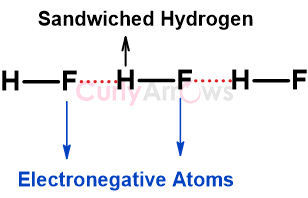
Visually, the electronegative atoms will look like the terminals of the linear bridge with Hydrogen atom holding the two ends.
However, unlike in the bridge the Hydrogen may or may not be equidistant from the two electronegative atoms. The equidistant property would depend on the nature of the electronegative atoms involved.
Why Hydrogen Bonding occurs?
Hydrogen is unique to have only one electron in the 1s orbital, the electron position closest to the nucleus. When Hydrogen shares this 1s electron to form a covalent bond with electronegative atoms N, O and F, it exposes the nucleus of the Hydrogen, a highly electron-deficient region.
For example, the covalent bond of the HF molecule is formed using one electron of Hydrogen.
Not only has the Hydrogen lost its only electron to the covalent bond formation, but the electronegative atom Fluorine (F) also pulls away most of the bond electrons towards itself.
By stealing most of the Hydrogen atoms electron density, the Fluorine (F) gets a partial negative charge (δ-), and the Hydrogen gets a partial positive charge (δ+).
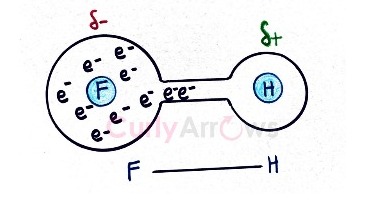
The Hydrogen atom is now highly electron-deficient, and it now tries to pull the electrons from the neighbouring electronegative atom by attraction. This creates an inter molecular interaction called the Hydrogen bond and is denoted by a dotted line (…).
Hydrogen bonding is a special case of dipole-dipole interaction; however, it is only seen in electronegative atoms containing at least one active lone pair. Lone pairs are unused electrons from bond formation reactions; however, being electrons and negatively charged centres, they participate in Hydrogen bonding as Hydrogen bond acceptors.
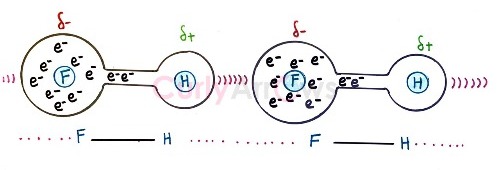
Visualizing the whole concept of intermolecular interaction will look like a hook-and-loop process. The loss of electrons to the bonded electronegative atom prompts the electron-deficient Hydrogen to throw a hook at the neighbouring electronegative atom’s loop (electron-rich lone pair on N, O, or F atoms) to pull it closer and interact.
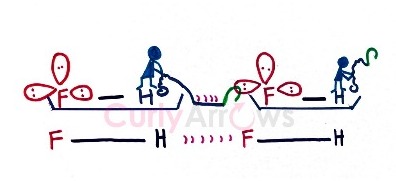
Such an electrostatic interaction is more potent than Vander Waals but weaker than covalent and ionic bonds.
